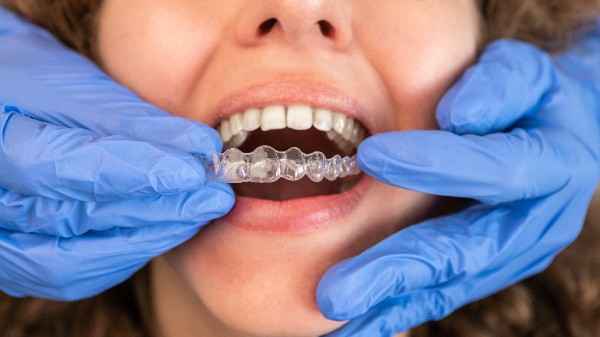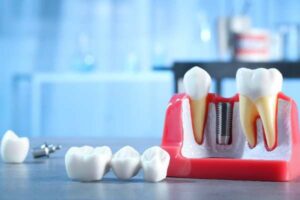
In a world where first impressions carry weight, a confident smile is one of the most powerful tools you can possess. Yet, for many adults and teenagers alike, dental misalignment often stands in the way affecting not just appearance, but oral function and overall health.
Straightening teeth no longer means metal brackets and years of discomfort. Today’s orthodontic advancements offer discreet, highly effective alternatives. Chief among them is Invisalign, a system that redefines how we approach teeth alignment through precision technology and personalised care.
This blog explores the complete Invisalign journey not just from a technical standpoint, but through a lens of practical insight, professional guidance, and everyday usability.
Understanding the Real Impact of Dental Misalignment
To appreciate the benefits of Invisalign, it’s crucial to understand the consequences of misaligned teeth, which go far beyond cosmetic concerns.

Health and Functional Issues Caused by Misaligned Teeth:
- Difficulty in maintaining oral hygiene, leading to plaque build-up and decay.
- Increased strain on jaw muscles, which may contribute to headaches and TMJ discomfort.
- Uneven wear on tooth surfaces makes them more prone to fractures or chipping.
- Speech challenges, particularly with certain bite types.
- A higher likelihood of emergency dental visits, especially when a misaligned bite causes accidental damage.
It’s not uncommon for people to only consider alignment solutions after visiting an emergency dentist in York for a cracked tooth or unexpected pain, often the result of a deeper, structural issue.
Behind the Scenes: The Technology Powering Invisalign
Unlike traditional braces, Invisalign relies on a series of clear, removable aligners that are custom-fitted using digital scanning and treatment planning.
Key Differences Between Invisalign and Traditional Braces:
The Invisalign York system uses a medical-grade material engineered for consistent, gentle pressure. When combined with 3D planning tools, it provides precise movements with minimal discomfort.
The Full Invisalign Journey: Step-by-Step Breakdown
Each Invisalign case is uniquely mapped based on the patient’s teeth and goals. Below is a comprehensive look at how the treatment unfolds from start to finish.
Step 1: Consultation and Assessment
This is the foundational stage of the process. A qualified clinician will carry out a complete oral evaluation to determine whether Invisalign is suitable for your needs.
What to Expect:
- A digital scan of your teeth using intraoral imaging technology.
- Bite assessment and oral health screening.
- Discussion about desired outcomes and treatment expectations.
Patients who have recently consulted an emergency dentist in York due to damage or bite-related discomfort often discover during this assessment that Invisalign can prevent future issues by correcting the underlying misalignment.
Step 2: Previewing the Results
A key highlight of Invisalign is that it allows you to see a digital preview of how your smile will change even before the treatment officially starts.
Benefits of the Digital Smile Preview:
- Encourages commitment to the process.
- Helps set realistic expectations.
- Allows your provider to fine-tune the plan.
Advanced software creates a simulation that shows how your teeth will move throughout the treatment, right through to the final result.
Step 3: Manufacturing Your Custom Aligners
Once your digital plan is confirmed, a series of custom aligners is produced. Each aligner is designed to move your teeth in small, controlled increments.
The Aligner System:
- In most cases, you’ll be provided with between 20 and 30 custom aligners throughout your treatment.
- Each set is worn for 1–2 weeks, depending on your personalised plan.
- All aligners are manufactured using Invisalign’s proprietary SmartTrack™ material.
The result is a smooth, clear aligner that fits snugly and works efficiently.
Step 4: Wearing the Aligners Consistently
The effectiveness of Invisalign depends largely on compliance. To ensure the treatment progresses as planned, aligners should be worn for 20 to 22 hours each day.
Tips for Daily Success:
- Remove aligners only for meals and oral hygiene.
- Avoid hot beverages while wearing them to prevent warping.
- Clean aligners regularly with non-abrasive solutions.
Patients sometimes forget their aligners during travel or meals, which can delay progress. A lapse of even a couple of days may require backtracking to the previous set.
Step 5: Regular Monitoring and Check-Ups
Treatment isn’t left on autopilot. Routine check-ins help your dentist track progress and make adjustments as needed.
Monitoring Options:
- In-person visits every 6 to 8 weeks.
- Remote progress tracking through mobile apps or photo uploads.
- New scans if the aligners aren’t tracking as expected.
Modern Invisalign systems may include technology that monitors how well your aligners fit and whether the teeth are moving according to plan. In some cases, adjustments are made mid-treatment to ensure optimal results.
Step 6: Refinement and Final Aligners
As treatment progresses, some teeth may need additional refinement. This is especially common with rotated teeth or complex crowding.
Refinement Process:
- A new scan is taken.
- Additional aligners are created for fine-tuning.
- Typically adds 2–6 weeks to treatment but ensures ideal results.
Patients who originally sought help from an emergency dentist in York often find this phase crucial, as the refinement corrects the precise areas that were previously problematic.
Step 7: Long-Term Retention
After completing treatment, you’ll need to wear retainers to keep your teeth in their new positions.
Types of Retainers:
- Clear removable retainers (such as Vivera).
- Fixed retainers, bonded behind the teeth.
- Night-time wear only, once the retention phase is stabilised.
Skipping retainers can lead to relapse where teeth slowly return to their original misaligned positions. It’s essential to follow the retention plan set by your dentist.
Advantages of Invisalign from a Clinical Perspective
Clinics specialising in Invisalign offer a streamlined experience rooted in precision and patient comfort. Compared to traditional orthodontics, it provides several clear benefits:
Core Advantages:
- Digitally mapped treatment ensures predictable outcomes.
- Fewer dental visits and minimal disruption to daily life.
- Higher satisfaction rates among adult patients.
- Easier to maintain oral hygiene throughout treatment.
Those who previously needed assistance from an emergency dentist often find Invisalign’s controlled movements much gentler, reducing the likelihood of future damage or discomfort.
When to Seek Immediate Dental Assistance
Even during orthodontic treatment, emergencies can occur. It’s important to know when to act.

Reasons to Contact an Emergency Dentist:
- Sudden or sharp pain in the teeth or jaw.
- Cracked, chipped, or loosened teeth.
- Damaged aligners are causing gum irritation.
- Swelling or signs of infection.
In these scenarios, reaching out to an emergency dentist ensures swift, professional support, often in coordination with your Invisalign provider to keep your treatment plan intact.
Conclusion:
Invisalign offers a reliable, virtually invisible path to straighter teeth, and for many, it’s the first time orthodontic treatment has felt both manageable and rewarding. Beyond aesthetics, it addresses functional issues and provides long-term health benefits when managed properly.
At EDY, we’re committed to guiding patients through every stage of the Invisalign journey from consultation to completion with care, expertise, and technology that delivers results.




